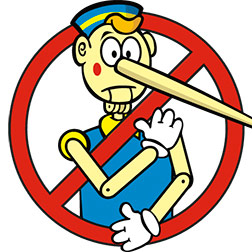Category: Branding
Branding: It’s in the Bag
 Would you pay $9,000 for a handbag? How about $150,000 or more?
Would you pay $9,000 for a handbag? How about $150,000 or more?
Plenty of people do. In fact, the Hermès Birkin bag, created in 1984 for actress/singer Jane Birkin, is so coveted that it commands these prices and is reputed to have a 36-year waiting list. But why?
The handbag has come to represent success, achievement and status. As one handbag blogger wrote, “The Birkin is more than just a bag, it’s a lifestyle.”
The woman who buys a Birkin is not buying a bag that will serve a function in her life. She is buying into a brand — her perception of what the bag stands for — and she will willingly pay a premium to join this exclusive club.
Irrational, you say? Most certainly. And that is the power of a great brand. A great brand can drive profits, big profits. It can protect you from your competition. And it’s nothing more than perception. Pretty amazing.
Build your brand. Shape audience perception. And then laugh all the way to the bank, preferably carrying a Birkin stuffed with cash.
Do you know what your brand stands for to customers and prospective customers? Do you guard it like the irreplaceable asset that it is? How can you leverage branding to improve your business performance?
Developing Honest And Effective Messaging
 Are you writing/designing/exhibiting/strategizing to reach and engage your intended audience of prospects in the most effective ways possible? Or are you doing what is expected and what you believe you can sell internally?
Are you writing/designing/exhibiting/strategizing to reach and engage your intended audience of prospects in the most effective ways possible? Or are you doing what is expected and what you believe you can sell internally?
If you are developing communications for the boss you are missing the mark — and missing a great opportunity to demonstrate expertise and deliver a marketing program that really works.
Successful marketers are fearless and confident. Are you? Tell the truth, or Santa will leave you a lump of coal.
The True Cost of Creativity
 Except for the very smallest of jobs, creative fees are always a small fraction of total costs (printing, media, etc.). The incremental difference between having professional, outside support or not will typically only increase costs from 5 to 10% on a small brochure or ad, and less than 1% on an annual report or multi-page web site. When the true costs of internal preparation — salaries, overhead, lost productivity— are added up, outside services nearly always cost less, not more. What’s more, external specialists likely have more refined skills than internal resources. Viewed from the bottom-line perspective, a small additional investment in design and writing quality produces an ROI that is sure to warm the heart of even the toughest CFO.
Except for the very smallest of jobs, creative fees are always a small fraction of total costs (printing, media, etc.). The incremental difference between having professional, outside support or not will typically only increase costs from 5 to 10% on a small brochure or ad, and less than 1% on an annual report or multi-page web site. When the true costs of internal preparation — salaries, overhead, lost productivity— are added up, outside services nearly always cost less, not more. What’s more, external specialists likely have more refined skills than internal resources. Viewed from the bottom-line perspective, a small additional investment in design and writing quality produces an ROI that is sure to warm the heart of even the toughest CFO.
Sincere thanks to Cameron Foote of Creative Business, who gave BDN permission to share his thoughts on the true cost of creativity.
Keeping Up With The Joneses: Analysis On B2B Marketing Spending
 How much are other B-to-B companies spending on marketing?
How much are other B-to-B companies spending on marketing?
40% report marketing budgets of under $1 million
21% report marketing budgets ranging from $1 million to $4.9 million
17% spend $5 million or more
Where are they spending their money?
Trade shows: 20% of budget
Television Advertising: 17%
Print Advertising: 15%
Inside Sales: 14%
Direct Mail: 14%
This information was gleaned from a survey of dedicated marketing executives in B-to-B businesses with revenues ranging from less than $100 million (nearly half of respondents) to $1 billion or higher. 35% of respondents described their businesses as Manufacturing, High-Tech, and Primary Production.
How much are you spending? How does your budget measure up?
Source: MarketingProfs Research Insights, MarketingProfs, LLC
Some More Things We Know About Aerospace Marketing
![Aerospace head_65223433 [Converted].eps](http://66.147.244.184/~bdnaeros/wp-content/uploads/2014/02/aerospacehead_350-300x212.jpg) We know that aerospace companies are conservative and tend to copy one another in their marketing efforts. Everyone’s logo is red, white and blue. Everyone has a Skunk Works, or a Phantom Works, or a Hawk Works. Use this to your advantage and distinguish yourself from the crowd of lookalikes.
We know that aerospace companies are conservative and tend to copy one another in their marketing efforts. Everyone’s logo is red, white and blue. Everyone has a Skunk Works, or a Phantom Works, or a Hawk Works. Use this to your advantage and distinguish yourself from the crowd of lookalikes.
We know that lots of Aerospace and Defense companies do not have a Crisis Communications plan and are completely unprepared should an incident or accident occur. The ramifications could be devastating.
We know that lots of aerospace and defense companies are spending money on ad placements in unaudited magazines that won’t do them any good. If you don’t know exactly who is receiving a given publication, you should not be advertising there.
We know that not everyone in our industry believes in marketing and that some think it’s a necessary evil. We also know that the business that finds itself immune to the necessity of marketing sooner or later finds itself immune to business.
Some Things We Know About Aerospace Marketing
 We know that it’s not unusual for aerospace and defense companies to have a “if we build it, they will come” mentality. That may have been true at one time, but today there are too many providers, and technology is changing too quickly, to make that assumption. It’s not enough to have good technology. You must be prepared to tell the marketplace why your technology is better and what it can do for the customer.
We know that it’s not unusual for aerospace and defense companies to have a “if we build it, they will come” mentality. That may have been true at one time, but today there are too many providers, and technology is changing too quickly, to make that assumption. It’s not enough to have good technology. You must be prepared to tell the marketplace why your technology is better and what it can do for the customer.
We understand that million- and billion-dollar aerospace and defense sales take years to cultivate, and that’s one reason a powerful, enduring brand is so critically important to this market.
We know that there’s a leadership gap in the American aerospace industry. We can make a case for why you should fill it and what that could mean to your company.
We know that engineers are not marketing people. And marketing people are not engineers. We know that marketing people shouldn’t design airplanes and engineers shouldn’t design ads.
We know it’s more important to show your products and technology than it is to talk about them. In person is best. Video demonstration is the second choice. If you have to choose between advertising and demonstrations, you’ve got to go with the demo.
Over to you. What do you know about aerospace marketing?
Marketing Tips: How Large Does A Logo Need To Be?
![]() Anyone in our business hears this request a lot. There’s even a song parody devoted to this very subject: www.youtube.com/watch?v=2fwV-dI0DxM
Anyone in our business hears this request a lot. There’s even a song parody devoted to this very subject: www.youtube.com/watch?v=2fwV-dI0DxM
Why is this so common? Sometimes when clients look at designs, they are focused on the things that are important to them, or what they think will be important to their bosses, like the logo. It’s understandable that they want their branding to be emphasized, but it’s more important to consider the viewpoint of their customers and prospective customers. It’s not about what you care about that matters. What do your customers care about?
Prospects really want to know what you do and what’s in it for them if they do business with you. Everything else is secondary. This is why your messages should first focus on the things that are important to them, and follow-up with information about the company. A larger logo may actually be distracting, and is a dead giveaway that you are a small company or have a small company mentality.
One more thing: Consider how a smaller logo may enhance your brand. Do you want to project an image of refined professionalism and quiet confidence? As the undisputed experts in your field, you don’t need to scream your message — you can quietly and confidently state your case.






